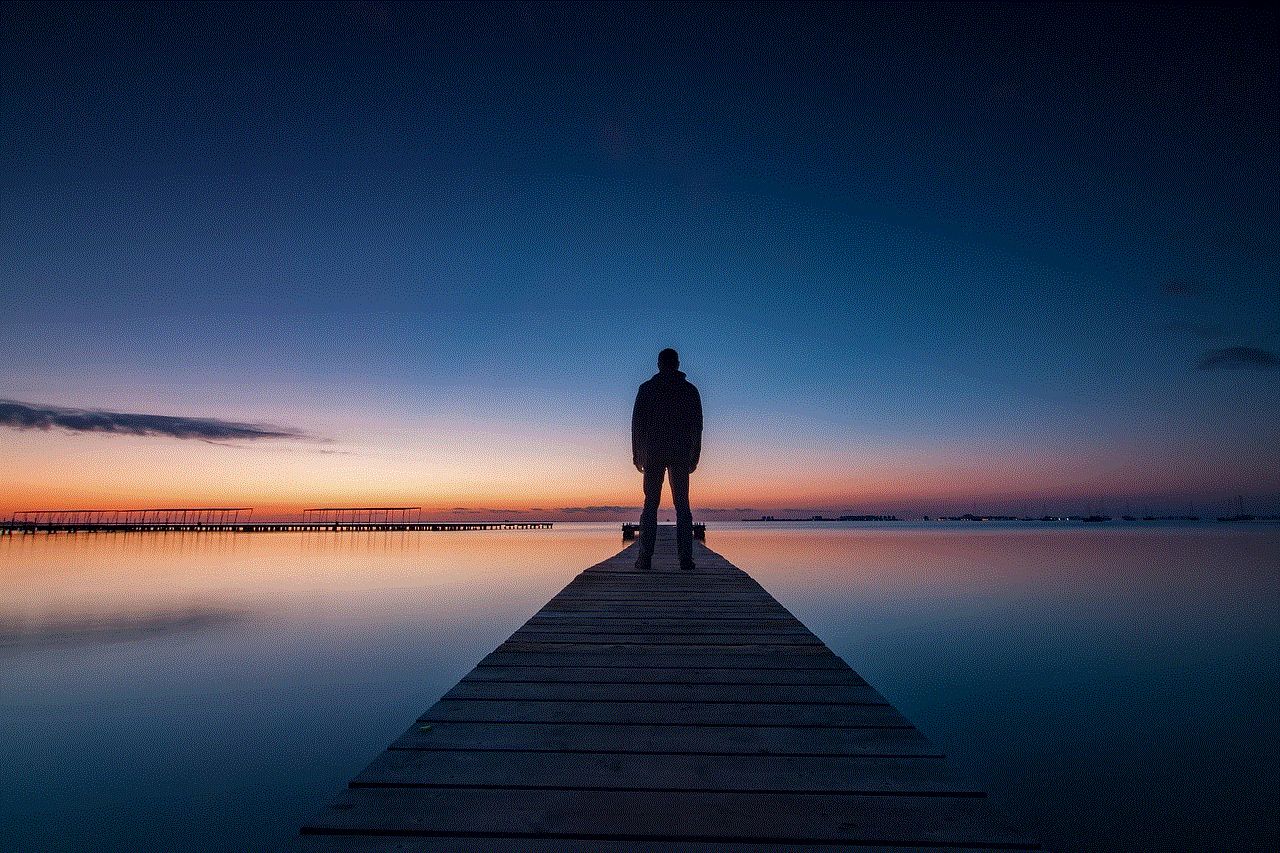how to switch to a personal account on instagram
# How to Switch to a Personal Account on Instagram
Instagram has evolved into one of the most popular social media platforms, with billions of users sharing their lives, interests, and creativity through photos and videos. While businesses and influencers often benefit from having a professional account, many users find that a personal account better suits their needs. Whether you’re looking to simplify your social media experience, prioritize personal connections, or take a break from the pressure of a business profile, Switch ing to a personal account on Instagram is a straightforward process. In this article, we will explore the reasons for making the switch, the steps involved, and tips for optimizing your personal account.
## Understanding Instagram Account Types
Before diving into the specifics of switching to a personal account, it’s essential to understand the different account types Instagram offers. Instagram primarily provides three types of accounts: personal, professional (which includes business and creator accounts).
1. **Personal Accounts**: These accounts are designed for general users who want to share their photos and videos with friends and family. They offer privacy settings that allow users to control who sees their content.
2. **Business Accounts**: Tailored for brands and businesses, these accounts provide features such as analytics, advertising tools, and contact options. They are ideal for users who want to promote their products or services.
3. **Creator Accounts**: Similar to business accounts, creator accounts cater to influencers, artists, and content creators. They offer specialized tools for managing a following and engagement metrics, allowing creators to connect more effectively with their audience.
Switching between these account types is a user-friendly process, and it’s essential to choose the one that aligns with your goals on the platform.
## Reasons to Switch to a Personal Account
There are various reasons why users may choose to switch from a business or creator account to a personal account:
1. **Reduced Pressure**: Business and creator accounts often come with the pressure of maintaining engagement, responding to messages, and creating content tailored for an audience. Switching to a personal account can alleviate this pressure, allowing you to focus on sharing content for your enjoyment.
2. **Privacy Control**: Personal accounts offer enhanced privacy features, enabling users to control who can see their posts and stories. This is particularly appealing for those who want to connect with friends and family without the scrutiny that comes with a public or professional profile.
3. **Simplified Features**: Personal accounts lack the complex analytics and advertising tools found in business accounts. If you’re not interested in promoting products or tracking engagement metrics, a personal account makes for a more streamlined experience.
4. **Less Commercialization**: Users may feel that their content is becoming too commercialized or promotional. By switching to a personal account, you can share more authentic and casual content without worrying about branding or marketing strategies.
5. **Flexibility**: If your interests and social media use evolve over time, having a personal account allows for greater flexibility. You can change your content style, engage with friends, and share personal experiences without the constraints of a business identity.
## Steps to Switch to a Personal Account on Instagram
Switching to a personal account on Instagram is a simple process. Here’s a step-by-step guide to help you make the change:
### Step 1: Open the Instagram App
Start by launching the Instagram app on your mobile device. Ensure you are logged into the account you wish to switch to a personal account.
### Step 2: Navigate to Your Profile
Once the app is open, tap on your profile icon located in the bottom right corner of the screen. This will take you to your Instagram profile page.
### Step 3: Access Account Settings
In your profile, tap on the three horizontal lines (the hamburger icon) located in the upper right corner. This will open a menu. From the menu, select “Settings” at the bottom.
### Step 4: Find Account Options
In the Settings menu, look for the “Account” option. Tap on it to access various account-related settings.
### Step 5: Switch Account Type
Scroll down until you see the “Switch Account Type” option. Tap on it, and you will see options to switch to a personal account or switch to a business account.
### Step 6: Confirm the Switch
Select the option to switch to a personal account. Instagram may prompt you to confirm your choice. After confirming, your account will be converted to a personal profile.
### Step 7: Review Your Profile Settings
After the switch, take a moment to review your profile settings to ensure your privacy preferences align with your expectations. You can adjust who can see your posts, stories, and follow requests in the privacy section of your settings.
## Post-Switch: Optimizing Your Personal Account
Once you’ve successfully switched to a personal account, there are several steps you can take to optimize your profile for a more enjoyable experience:
### 1. Update Your Bio
Your bio is the first thing people will see when they visit your profile. Make sure to update it to reflect your personality and interests. Use emojis, fun facts, or quotes that resonate with you. This will help friends and family understand what you’re about.
### 2. Review Privacy Settings
As mentioned earlier, personal accounts offer enhanced privacy controls. Take the time to review your privacy settings. You can choose to make your account private, meaning only approved followers can see your posts. This is particularly useful for those who want to share personal moments with a select audience.
### 3. Curate Your Feed
With a personal account, you have the freedom to curate your feed without the constraints of a brand identity. Share content that genuinely reflects your interests, whether that’s travel photos, cooking experiments, or moments with friends. This will keep your Instagram experience enjoyable and authentic.
### 4. Engage Authentically
A personal account allows for more authentic engagement. Interact with friends and family by liking and commenting on their posts. Share stories that give insights into your daily life, and don’t hesitate to share your thoughts and feelings. Building genuine connections is one of the primary benefits of a personal account.
### 5. Utilize Story Highlights
Instagram Stories are a fantastic way to share fleeting moments that may not make it to your main feed. After switching to a personal account, consider creating Story Highlights to showcase your favorite memories, travels, or hobbies. This adds an extra layer to your profile and allows followers to engage with your content more meaningfully.
### 6. Experiment with Content
Without the pressure of maintaining a brand image, feel free to experiment with different content styles. Try using Instagram Reels, sharing candid photos, or posting videos where you express your thoughts. This is your space, and it’s essential to enjoy the creative process.
### 7. Follow Relevant Accounts
Curate your feed by following accounts that inspire you, make you laugh, or keep you informed. Whether it’s friends, family, or accounts related to your hobbies, following accounts that align with your interests will enhance your overall Instagram experience.
### 8. Set Boundaries
While Instagram is a platform for connection, it’s essential to set boundaries on your usage. Consider implementing limits on how much time you spend on the app, and take breaks when needed. This will help you maintain a healthy relationship with social media.
### 9. Stay Updated
Instagram frequently updates its features and algorithms. Stay informed about new tools, privacy settings, and engagement strategies by following the official Instagram blog or relevant social media news sources. This knowledge will help you make the most of your personal account.
### 10. Enjoy the Journey
Finally, remember to enjoy the journey of sharing your life through your personal account. Engage with your followers, celebrate milestones, and capture memories. Instagram can be a beautiful way to document your experiences, so embrace the creativity and connection it offers.
## Conclusion
Switching to a personal account on Instagram can provide a more relaxed and authentic social media experience. Whether you’re seeking privacy, reduced pressure, or a platform to share your personal interests, the transition is simple and effective. By understanding the benefits of a personal account and taking the necessary steps to optimize your profile, you can create a space that reflects who you are and fosters genuine connections with those who matter most. Remember, Instagram is about sharing moments and experiences; enjoy the process and have fun with it!
why did my facebook disappear
# Why Did My Facebook Disappear? Understanding Common Issues and Solutions



In the digital age, social media platforms like Facebook have become integral to how we connect, communicate, and share our lives with others. For many users, losing access to their Facebook account can feel like losing a part of their identity. If you’ve ever wondered, “Why did my Facebook disappear?” you’re not alone. This article will explore the various reasons why your Facebook account might disappear, how to troubleshoot these issues, and preventive measures you can take to secure your account against future problems.
## The Importance of Facebook in Our Lives
Before diving into the reasons behind a disappearing Facebook account, it’s vital to understand the significant role Facebook plays in our lives. Launched in 2004, Facebook started as a simple social networking site for college students but has grown into a global platform with over 2.8 billion monthly active users. It serves various purposes, such as:
1. **Connecting with Friends and Family**: Facebook allows users to stay in touch with loved ones, share updates, and celebrate milestones.
2. **Networking**: Professionals use Facebook to connect with colleagues, share industry news, and build their personal brands.
3. **Marketing**: Businesses leverage Facebook to reach potential customers through targeted ads and engaging content.
4. **Community Building**: Groups and pages allow users to connect with people who share similar interests, hobbies, or causes.
Given its importance, it can be distressing to find that your Facebook account has disappeared or become inaccessible.
## Common Reasons for a Disappearing Facebook Account
### 1. Account Deactivation
One of the most common reasons why a Facebook account may seem to disappear is that the user has deactivated it. Facebook allows users to temporarily disable their accounts, which hides their profiles, photos, and posts from other users. This feature can be useful for individuals looking to take a break from social media without permanently deleting their account. If you suspect this is the case, try logging in to see if you can reactivate your account.
### 2. Account Deletion
If an account has been deleted, either by the user or by Facebook, it is permanently removed from the platform. Users may choose to delete their accounts for various reasons, including privacy concerns or a desire to disconnect from social media. In contrast, Facebook may delete accounts that violate its community standards, engage in fraudulent activity, or use fake identities. If you believe your account has been deleted, you can attempt to recover it through Facebook’s help center.
### 3. Hacking or Unauthorized Access
Your Facebook account may disappear due to unauthorized access. If a hacker gains control of your account, they might change your login credentials, deactivate your account, or even delete it entirely. Signs of a hacked account include unusual posts, messages sent without your knowledge, or changes to your profile information. If you suspect that your account has been compromised, it is crucial to act quickly by attempting to reset your password and securing your email account.
### 4. Violation of Community Standards
Facebook has strict community guidelines to ensure a safe and respectful environment. Accounts that engage in activities such as hate speech, harassment, or sharing misleading information may be flagged and potentially removed. If your account has been disabled for violating community standards, Facebook will typically send a notification explaining the reason. In such cases, users can appeal the decision through Facebook’s help center.
### 5. Technical Glitches
Sometimes, the reason for a disappearing Facebook account is not as dramatic as hacking or deletion; it may simply be a technical glitch. These glitches can occur due to server issues, bugs in the app, or problems with your internet connection. If you encounter issues accessing Facebook, try clearing your browser cache, updating the app, or checking your internet connection.
### 6. Account Suspension
In some cases, Facebook may temporarily suspend an account due to suspicious activity or a violation of its terms of service. Users may receive a notification regarding the suspension and be required to verify their identity before regaining access. This process usually involves answering security questions or receiving a verification code via email or SMS.
### 7. Changes in Privacy Settings
If your Facebook account seems to have disappeared from the view of your friends or the public, it could be a result of changes in your privacy settings. Facebook allows users to control who can see their posts and profile information. If you’ve adjusted your privacy settings to restrict visibility, it may appear as though your account has disappeared, although it is still active.
### 8. Account Recovery Issues
If you recently changed your email address or phone number linked to your account, you might face difficulties recovering your account if you forget your password. Facebook relies on your registered email or phone number to send recovery links or codes. If you can’t access those, you might find yourself locked out of your account.
### 9. Age Restrictions
Facebook has age restrictions in place to protect younger users. If you created an account while under the minimum age requirement (13 years in most countries), Facebook might deactivate your account upon discovering this. In such cases, you would need to provide proof of age or create a new account once you meet the age criteria.
### 10. Regional Restrictions
In some regions, Facebook has been restricted or banned due to government regulations. If you are traveling or living in a country where Facebook is not accessible, you might experience difficulties logging into your account. While this does not mean your account has disappeared, it can create the illusion that it has.



## Troubleshooting Steps for a Disappearing Facebook Account
If you find that your Facebook account has disappeared, here are some troubleshooting steps you can take:
### Step 1: Try Logging In
First and foremost, attempt to log in to your Facebook account. If you can log in successfully, it may have just been a temporary issue. If you cannot log in, proceed to the next steps.
### Step 2: Check Your Email
Look for any emails from Facebook regarding the status of your account. If your account has been disabled, you should receive a notification explaining the reason. If you see an email indicating that your account has been hacked or changed, follow the instructions provided.
### Step 3: Use the Facebook Help Center
Visit the Facebook Help Center to find information related to your issue. Facebook provides resources for account recovery, reporting hacked accounts, and appealing account suspensions.
### Step 4: Reset Your Password
If you suspect that your account has been hacked, reset your password immediately. Use the “Forgot Password?” link on the login page, and follow the instructions to regain access.
### Step 5: Verify Your Identity
If Facebook has suspended or disabled your account, you may need to verify your identity. Follow the prompts provided by Facebook to submit identification documents or answer security questions.
### Step 6: Check for Technical Issues
Sometimes technical issues can prevent you from accessing your account. Ensure that your internet connection is stable, and try accessing Facebook from a different device or browser. If issues persist, check for any announcements from Facebook regarding server outages.
## Preventive Measures to Secure Your Facebook Account
To avoid future issues with your Facebook account, consider implementing the following preventive measures:
### 1. Enable Two-Factor Authentication
Two-factor authentication adds an extra layer of security to your account. By requiring a verification code sent to your mobile device or email, it makes it more challenging for unauthorized users to gain access.
### 2. Regularly Update Your Password
Change your password regularly and ensure that it is strong and unique. Avoid using easily guessed information, such as birthdays or common phrases.
### 3. Review Privacy Settings
Periodically review your privacy settings to ensure they align with your preferences. Adjust who can see your posts, profile information, and friend list to maintain control over your online presence.
### 4. Monitor Account Activity
Keep an eye on your account activity for any suspicious behavior. Facebook allows you to view login sessions and devices used to access your account. If you see anything unfamiliar, change your password immediately.
### 5. Be Cautious of Phishing Scams
Be wary of unsolicited emails or messages asking for your login information. Always access Facebook through the official website or app and avoid clicking on links from unknown sources.
### 6. Keep Your Email Account Secure
Since your Facebook account is linked to your email, ensure that your email account is secure. Use strong passwords, enable two-factor authentication, and regularly monitor for suspicious activity.



## Conclusion
Experiencing a disappearing Facebook account can be alarming, but understanding the potential reasons behind it can help ease your concerns. Whether it’s due to account deactivation, hacking, or technical glitches, there are steps you can take to troubleshoot the issue and regain access. By implementing preventive measures, you can secure your account and minimize the risk of future problems. Remember, social media is a tool for connection and expression, and maintaining a safe and secure online presence is essential in today’s digital landscape.
